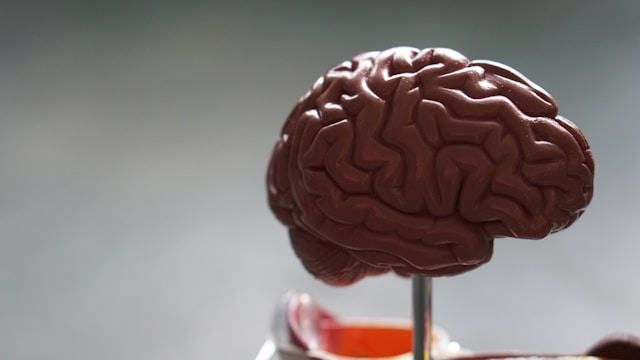
Have you ever heard of a cerebral aneurysm?
It’s a serious medical condition that can lead to life-threatening complications.
In this blog post, we’ll explore what cerebral aneurysms are, their causes, and how to prevent them.
We’ll also discuss risk factors beyond direct causes, such as age, sex, and family history.
What is Cerebral Aneurysm?
A cerebral aneurysm refers to a weakened or bulging area in the wall of a blood vessel within the brain.
This bulge has the potential to result in the rupture of the blood vessel, leading to a hemorrhagic stroke.
Cerebral aneurysms can be either congenital, meaning present at birth, or acquired, developing later in life.
These structural weaknesses pose a risk, and understanding their nature is crucial for effective management and prevention of potentially severe consequences.

What are the Causes of a Cerebral Aneurysm?
Understanding these causes is crucial for both prevention and effective management.
Here are the key factors contributing to the formation of cerebral aneurysms:
Weakened blood vessel walls
The primary cause of cerebral aneurysms lies in the weakening of blood vessel walls.
This vulnerability can stem from a combination of genetic factors and acquired risks.
Genetic predispositions, often inherited, or acquired factors like high blood pressure and smoking play a pivotal role in compromising the integrity of blood vessel walls.
Inherited conditions
Some inherited conditions can increase the risk of developing a cerebral aneurysm. These include:
Familial aneurysm syndrome
Familial Aneurysm Syndrome is a rare genetic disorder characterized by an increased susceptibility to developing cerebral aneurysms.
Individuals with this syndrome have a heightened risk due to genetic factors passed down within families.
Ehlers-Danlos syndroms
Ehlers-Danlos Syndrome represents a group of inherited disorders that affect connective tissue, encompassing various bodily structures, including blood vessels.
Individuals with Ehlers-Danlos Syndrome face an elevated risk of developing cerebral aneurysms due to the impact of the disorder on the structural integrity of blood vessels.
Acquired risk factors
Acquired risk factors for cerebral aneurysms include:
High blood pressure
Chronic high blood pressure emerges as a significant contributor to cerebral aneurysms.
Prolonged elevated pressure can gradually weaken the walls of blood vessels, creating an environment conducive to the formation of aneurysms.
Smoking
The detrimental effects of smoking extend to blood vessels, making it a noteworthy acquired risk for cerebral aneurysms.
The harmful substances in tobacco can damage the integrity of blood vessel walls, amplifying the vulnerability to aneurysm development.
Age and sex
Age plays a role in the likelihood of cerebral aneurysm occurrence, with the risk increasing as individuals age.
Additionally, there is a gender difference, as men are statistically more prone to developing cerebral aneurysms compared to women.
Family history
A familial connection to cerebral aneurysms or subarachnoid hemorrhage can amplify an individual’s susceptibility.
A family history of such conditions serves as a significant risk factor, emphasizing the need for heightened awareness and preventive measures for individuals with a genetic predisposition.

What Are The Symptoms of Cerebral Aneurysm
Symptoms of unruptured cerebral aneurysms
Most cerebral aneurysms do not show symptoms until they either become very large or rupture. However, some unruptured cerebral aneurysms may cause symptoms, including:
- Headaches: These headaches are often described as the “worst headache of my life.”
- Stiff neck: A stiff neck can be a sign of an unruptured cerebral aneurysm.
- Nausea and vomiting: Nausea and vomiting can be a symptom of an unruptured cerebral aneurysm.
- Changes in mental status: Changes in mental status, such as confusion or difficulty concentrating, can be a sign of an unruptured cerebral aneurysm.
Symptoms of ruptured cerebral aneurysms
A ruptured cerebral aneurysm can cause a sudden, severe headache with or without stroke symptoms. Other symptoms of a ruptured cerebral aneurysm include:
- Nausea and vomiting: Nausea and vomiting can be a symptom of a ruptured cerebral aneurysm.
- Stiff neck: A stiff neck can be a sign of a ruptured cerebral aneurysm.
- Blurred or double vision: Blurred or double vision can be a symptom of a ruptured cerebral aneurysm.
- Sensitivity to light: Sensitivity to light can be a symptom of a ruptured cerebral aneurysm.
- Seizure: A seizure can be a symptom of a ruptured cerebral aneurysm.
- A drooping eyelid: A drooping eyelid can be a symptom of a ruptured cerebral aneurysm.
- Loss of consciousness: Loss of consciousness can be a symptom of a ruptured cerebral aneurysm.
- Numbness or weakness on one side of the face: Numbness or weakness on one side of the face can be a symptom of a ruptured cerebral aneurysm.
- Difficulty speaking: Difficulty speaking can be a symptom of a ruptured cerebral aneurysm.
- Headaches: Headaches can be a symptom of a ruptured cerebral aneurysm.
- Loss of balance: Loss of balance can be a symptom of a ruptured cerebral aneurysm.
- Difficulty concentrating: Difficulty concentrating or problems with short-term memory can be a symptom of a ruptured cerebral aneurysm.
How to Prevent Cerebral Aneurysms

While some risk factors for cerebral aneurysms are beyond our control, there are steps we can take to reduce our risk:
Maintain a healthy blood pressure
Regular monitoring of blood pressure is a key component of preventive care.
If elevated, taking prescribed medications and following medical advice can help control and maintain a healthy blood pressure level.
Managing blood pressure not only supports overall cardiovascular health but also plays a crucial role in preventing the weakening of blood vessel walls, a primary factor in cerebral aneurysm development.
Quit smoking
Ceasing tobacco use is a powerful step in reducing the risk of cerebral aneurysms.
Smoking damages blood vessels, making them more susceptible to weaknesses and potential aneurysm formation.
Seeking support, whether through counseling or cessation programs, can significantly improve the success of quitting smoking and contribute to long-term vascular health.
Exercise regularly
Incorporating regular physical activity into your routine promotes overall cardiovascular well-being.
Exercise helps maintain a healthy weight, improves blood circulation, and contributes to the strength of blood vessels.
Engage in activities such as walking, jogging, swimming, or cycling to support your cardiovascular system and reduce the risk of conditions like cerebral aneurysms.
Eat a balanced diet
Adopting a balanced and nutritious diet is instrumental in maintaining a healthy weight and supporting vascular health.
Emphasize a diet rich in fruits, vegetables, whole grains, and lean proteins.
These food choices provide essential nutrients, antioxidants, and fiber, contributing to overall cardiovascular well-being and reducing the risk of conditions associated with weakened blood vessels, including cerebral aneurysms.
Limit alcohol consumption
Excessive alcohol intake can adversely affect blood vessels, increasing the risk of cerebral aneurysms.
Moderating alcohol consumption and adhering to recommended guidelines can mitigate this risk.
Understanding and managing alcohol intake is crucial for sustaining vascular health and minimizing the potential impact on blood vessel integrity.
Conclusion
Cerebral aneurysms are a serious medical condition that can lead to life-threatening complications.
Understanding the causes and risk factors can help us take steps to prevent them.
While some risk factors are beyond our control, maintaining a healthy lifestyle and monitoring our blood pressure can help reduce our risk of developing a cerebral aneurysm.
FAQs
A cerebral aneurysm is a bulging or weakened area in the wall of a blood vessel in the brain.
The most common cause of a cerebral aneurysm is a weakened blood vessel wall. This can be due to genetic factors, such as inherited conditions, or acquired risk factors, such as high blood pressure or smoking.
Risk factors for developing a cerebral aneurysm include weakened blood vessel walls, inherited conditions, acquired risk factors, age, sex, and family history.
To prevent a cerebral aneurysm, maintain a healthy blood pressure, quit smoking, exercise regularly, eat a balanced diet, and limit alcohol consumption.


